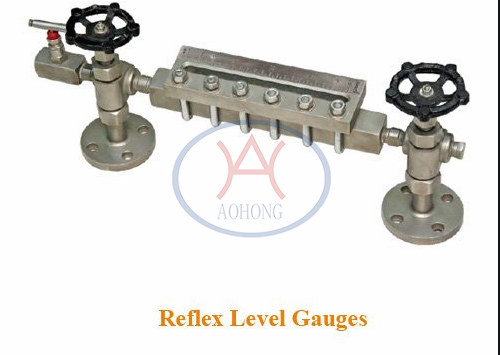How does Reflex Level Gauge Work?
As a Level Gauges Supplier, share with you. Reflex Level Gauge is designed to detect the difference in refractive index between vapor and liquid and liquid level detection, and can be used in a variety of process applications. Reflex Level Gauges are usually used for liquid level detection in specific containers. The main principle is based on the difference in refractive index between vapor and liquid.
Reflex Level Gauge
The reflective level gauge, also known as the prismatic level gauge, can provide a clear image of the water level. This reduces the risk of distortion or reading area. Therefore, the reflective level gauge can be installed in an oblique view or in a vertical position to produce higher reading accuracy and higher reliability. As you can imagine, this is very beneficial to many industries.
Level Gauge also has great flexibility when combining multiple level gauge parts, which can expand the field of view. In addition, reflective level gauges can be used in many applications, including feedwater heaters, degassers, boiler drums and other types of water tanks.
For Reflex Level Gauge, in the groove of the liquid chamber and behind a piece of glass is a liquid column clamped down on the main body of the level gauge. The glass is flat on the outside, but on the inside it has a series of prism grooves facing the vapor and liquid spaces. Depending on whether the light enters the vapor space or the liquid space, it is reflected or absorbed respectively.
Once the light encounters the surface of the groove in the vapor space, it is reflected to the groove surface on the opposite side and then completely reflected back to the viewing direction. During the liquid phase, light is absorbed, which creates a display for the area covered by the liquid and another display for the area above the liquid.
Using prism glass, the reflective level gauge can accurately measure the liquid in the container. When light hits glass without liquid, the prism reflects the light directly out of the gauge. The area called "dry" appears silver, while the "wet" area appears black. The contrasting colors create a clear outline, making it easy to view the measurement.
The composition and design of the transparent level gauge is unique. The gauge is non-tubular and contains two transparent flat glasses with liquid in between. Through the different transparency of the two media, the liquid level can be indicated. The back of the transparent level gauge is a light source, the light is reflected downward to the observer, so that the measurement result can be read or estimated. For most installations, a transparent level gauge is suitable.

Comments
Post a Comment